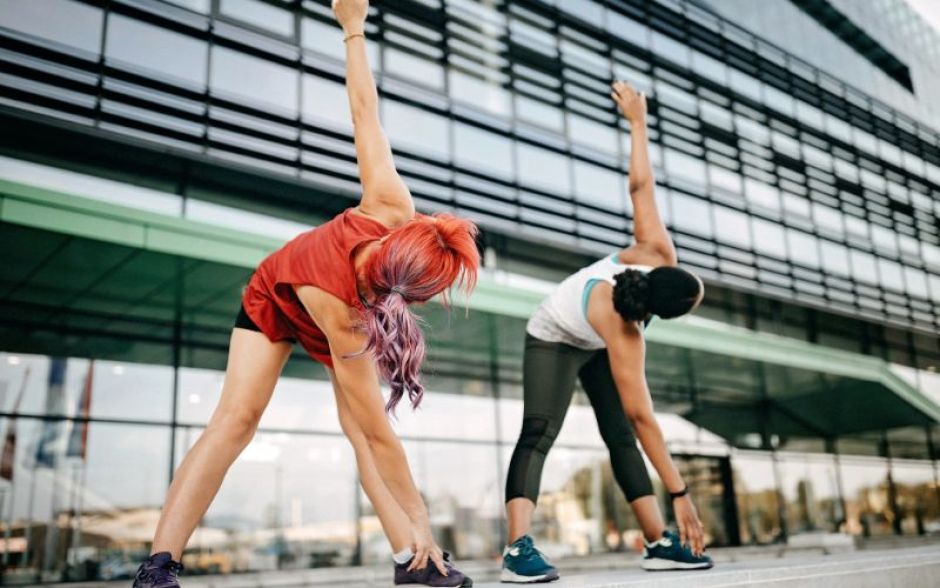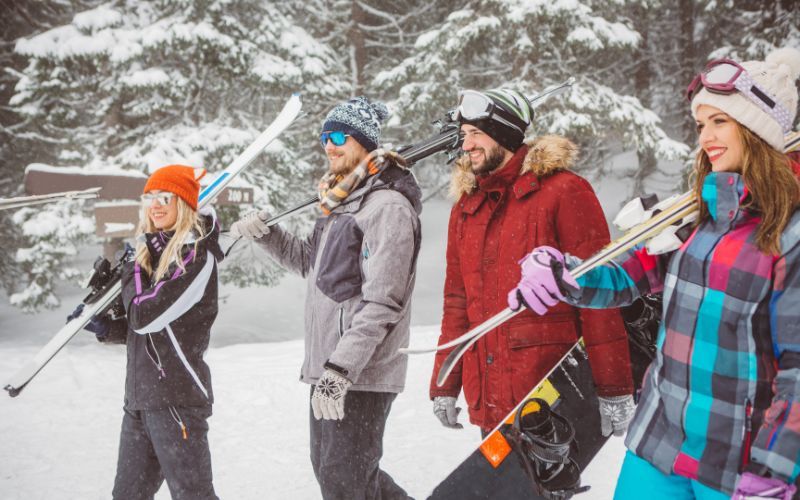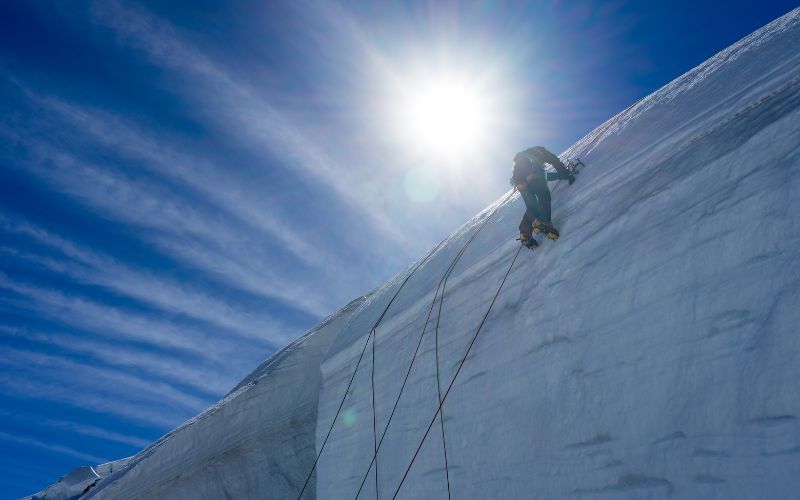
Full Body Warm-Up: Preparing for Super Winter Sports 2023
Full Body Warm-Up – As winter’s arrival looms, a multitude of sports enthusiasts eagerly anticipates the chance to venture onto the slopes, glide across ice rinks, or traverse snowy trails, immersing themselves in the winter wonderland. Whether one’s heart yearns for the adrenaline rush of skiing, the artistry of snowboarding, the grace of ice skating, or the serenity of snowshoeing, these winter activities promise exhilarating experiences and an opportunity to bask in the breathtaking beauty of the season.
Yet, the allure of these sports should not overshadow the importance of adequate preparation, for engaging in winter sports without proper readiness can result in injuries and a significant dip in performance. This is where the significance of a comprehensive full-body warm-up becomes abundantly clear.
A full-body warm-up isn’t merely a perfunctory ritual but rather a vital prerequisite for a safe and enjoyable winter sports season. Beyond the thrill and excitement, these activities place unique physical demands on the body. Icy slopes, swift descents, abrupt changes in terrain, and challenging movements on the ice necessitate a body that is well-prepared and resilient.
Table of Contents
Through a well-structured warm-up regimen, you can safeguard against the risk of injuries and ensure that you’re ready to give your best performance. It serves a dual purpose: injury prevention and physical readiness. Cold muscles and joints are less flexible and more prone to strains and tears, making them vulnerable to the rigors of winter sports. However, a warm-up elevates your body’s core temperature, dilates blood vessels, and increases blood flow to your muscles, enhancing muscle elasticity and reducing the likelihood of injuries.

Moreover, an effective warm-up primes your body for the specific physical demands of your chosen winter sport. Whether it’s the explosive power required for skiing and snowboarding, the graceful precision needed for ice skating, or the endurance demanded by snowshoeing, a warm-up optimally readies your body for the challenges ahead.
In essence, a full-body warm-up is your insurance policy for an injury-free and enjoyable winter sports season. So, before you hit the slopes, lace up your skates, or step into your snowshoes, remember that the few extra minutes spent on a thorough warm-up can make all the difference, allowing you to savor every moment of your winter sports adventure.
Full Body Warm-Up: Ensuring a Safe and Enjoyable Winter Sports Season
Before you embark on your winter sports adventure, it’s crucial to prioritize your safety and enhance your performance with a comprehensive full body warm-up routine. A well-executed warm-up not only helps prevent injuries but also prepares your body for the physical demands of winter sports, ensuring you get the most out of every thrilling moment on the snow and ice.
In this detailed guide, we’ll explore the importance of a full body warm-up and provide you with a step-by-step plan to get your body ready for the cold and challenging conditions of winter sports. Whether you’re a seasoned athlete or a beginner, incorporating these warm-up exercises into your routine can make a significant difference in your winter sports experience.
The Benefits of a Full Body Warm-Up
Why a Full Body Warm-Up Matters: Key Benefits – Full Body Warm-Up

A full body warm-up is not just a preliminary ritual; it’s a pivotal component of your winter sports preparation that yields a multitude of invaluable benefits. Delving deeper into the significance of a full-body warm-up, we uncover the key advantages it offers, emphasizing the critical role it plays in your safety and performance.
1. Injury Prevention: The Foremost Advantage – Full Body Warm-Up
At the core of the warm-up’s importance lies injury prevention. When embarking on winter sports, you expose your body to unique challenges and physical stresses. The risk of injury amplifies on slippery slopes, unforgiving ice, and steep descents. In this context, a comprehensive warm-up acts as a protective shield.
Cold muscles and joints are inherently less flexible and more prone to injury. A warm-up combats this vulnerability by increasing your body’s core temperature, dilating blood vessels, and enhancing blood flow to your muscles. Consequently, your muscles become more pliable, resilient, and less susceptible to strains, sprains, and tears. With each muscle group primed and ready, you create a robust defense against the perils of winter sports.
2. Enhanced Performance: Unleash Your Potential – Full Body Warm-Up
While safety is paramount, your performance on the snow and ice is equally crucial. The varied and demanding nature of winter sports necessitates a body that’s finely tuned and prepared for peak performance.

A well-structured warm-up is the key to unlocking your potential. It optimally readies your body for the distinct physical demands of winter sports, ensuring that you can respond swiftly and effectively. Whether you’re executing precise figure skating maneuvers or navigating challenging terrains on skis or a snowboard, your warm-up enhances your overall flexibility, strength, and cardiovascular capacity. This, in turn, empowers you to perform with greater precision, efficiency, and control.
3. Improved Flexibility: Embrace Fluidity in Movement – Full Body Warm-Up
Flexibility is a cornerstone of winter sports performance. From deep knee bends in skiing to graceful leaps in figure skating, a wide range of motion is essential. Cold muscles, however, tend to limit flexibility, impeding your ability to execute these movements seamlessly.
Dynamic stretching, a key component of your warm-up, addresses this limitation. It involves active movements that guide your muscles through their full range of motion, gradually increasing flexibility. This newfound flexibility not only allows you to perform complex maneuvers with ease but also reduces the risk of muscle strains. As your body becomes more adaptable, it can gracefully respond to the dynamic challenges presented by winter sports.
4. Reduced Muscle Soreness: A Post-Sports Reward – Full Body Warm-Up
The exhilaration of winter sports often comes with the cost of muscle soreness that can follow intense activities. However, a well-structured warm-up contributes to reducing post-exercise soreness, allowing you to enjoy your winter sports experience without unnecessary discomfort.
By effectively preparing your muscles for the upcoming demands, the warm-up minimizes the microtrauma that can occur during exercise. As a result, you’re less likely to experience muscle soreness after your winter sports session. This means you can fully savor the memories of your adventure without the lingering physical discomfort.
5. Mental Preparation: The Confidence Factor – Full Body Warm-Up
Beyond its tangible physical benefits, the warm-up also serves as vital mental preparation. It grants you a dedicated window to focus on your goals, strategize your actions, and mentally rehearse your performance. This mental clarity enhances your confidence and poise, critical elements in the world of winter sports.
As you progress through your warm-up routine, you cultivate a sense of readiness and anticipation. You build mental resilience, knowing that you’ve primed your body for peak performance. This psychological advantage is particularly invaluable in winter sports, where confidence can be the key to mastering challenging slopes, conquering intricate routines, or navigating unfamiliar terrains.
In conclusion, the benefits of a full-body warm-up extend far beyond mere physical preparation. It serves as a fortress against injuries, a catalyst for improved performance, a gateway to enhanced flexibility, a shield against muscle soreness, and a source of mental fortitude. As you embark on your winter sports adventures, remember that your warm-up is not just a prelude; it’s the foundation upon which your safety and success on the snow and ice are built.

Components of a Full Body Warm-Up
Key Elements of an Effective Warm-Up – Full Body Warm-Up
A truly effective warm-up is a structured and purposeful routine that encompasses several key elements. Understanding these elements and their importance is essential for crafting a warm-up that optimally prepares your body for the physical demands of winter sports. Let’s delve deeper into the critical components that constitute a successful warm-up:
1. Cardiovascular Warm-Up: Igniting the Fire – Full Body Warm-Up
The cardiovascular warm-up is the ignition key to your warm-up routine. It marks the transition from a state of rest to one of physical readiness. This phase typically involves 5-10 minutes of light to moderate aerobic exercise. Activities like jogging in place, jumping jacks, or brisk walking effectively raise your heart rate and elevate your body’s core temperature.
The significance of this element cannot be overstated. As your heart rate increases, blood vessels dilate, and blood flow surges through your muscles. This, in turn, delivers oxygen and nutrients to your muscle fibers, fueling them for the upcoming exertion. Your cardiovascular system is awakened, and your body shifts from a state of dormancy to one of heightened alertness.
2. Dynamic Stretching: Preparing for Movement – Full Body Warm-Up
Dynamic stretching is the dynamic counterpart to the stationary stretches typically associated with traditional static stretching. During dynamic stretching, you engage in active movements that take your muscles through their full range of motion. These movements are controlled and deliberate, emphasizing fluidity rather than static holds.

The primary objective of dynamic stretching is to prepare your muscles and joints for the dynamic and varied movements of winter sports. It increases blood flow to specific muscle groups, enhances their elasticity, and promotes synovial fluid production within the joints. This, in turn, improves joint mobility and reduces the risk of muscle strains during dynamic activities.
3. Sport-Specific Movements: Mimicking the Sport – Full Body Warm-Up
Sport-specific movements are integral to a warm-up tailored for winter sports. These exercises closely mimic the actions you’ll be performing during your chosen winter activity. Whether you’re skiing, ice skating, or snowshoeing, incorporating these sport-specific motions readies your body for the precise requirements of your sport.
For skiers and snowboarders, this might involve practicing squats and lateral movements, mimicking the motions needed for balance and control on the slopes. Ice skaters may engage in forward and backward strides to acclimate their muscles and joints to the gliding motions of ice skating. Snowshoers may emphasize lower body flexibility exercises and incorporate core-warming exercises like trunk twists and side bends.
4. Static Stretching: Embracing Flexibility – Full Body Warm-Up
Static stretching is the final piece of the warm-up puzzle. After completing the dynamic stretches and sport-specific movements, static stretching exercises are introduced to further enhance flexibility. This component focuses on elongating and relaxing specific muscle groups, primarily those prone to tightness during winter sports.
Static stretches are typically held for 15-30 seconds, allowing time for a gentle and controlled stretch without overexertion. Key muscle groups targeted for static stretching might include the hamstrings, quadriceps, calves, hip flexors, and any other areas where you personally tend to experience tightness or stiffness.
5. Mental Preparation: Focusing Your Mind – Full Body Warm-Up
While not as readily apparent as the physical elements, mental preparation is an integral part of the warm-up process. As you move through each phase of your warm-up routine, you simultaneously embark on a mental journey of readiness.
During this time, you shift your focus from the external world to your internal objectives. You envision the challenges and movements specific to your chosen winter sport. You set clear intentions for your performance, aligning your mind with your body’s readiness.
Mental preparation during the warm-up fosters mental resilience and boosts confidence. It helps you enter the world of winter sports with a clear mind and a sense of purpose, ready to tackle whatever challenges may arise.
In essence, a well-structured warm-up incorporates these five key elements, ensuring that your body and mind are fully prepared for the exhilarating and demanding world of winter sports. Each element serves a unique purpose, contributing to your safety, performance, flexibility, and overall readiness. When combined, they create a warm-up routine that optimizes your winter sports experience.
Preparing for Specific Winter Sports – Full Body Warm-Up
Tailoring Your Warm-Up to Your Activity – Full Body Warm-Up
Customization is the key to an effective warm-up, and this becomes especially important when preparing for specific winter sports. Tailoring your warm-up to align with the unique physical demands of your chosen activity is essential for maximizing your safety and performance. Let’s delve into how you can adapt your warm-up routine to suit various winter sports:
Skiing and Snowboarding Warm-Up – Full Body Warm-Up
For skiers and snowboarders, a tailored warm-up is all about preparing the lower body for the intense demands of downhill descents. Here are some considerations for customizing your warm-up:
- Leg-Strengthening Exercises: Incorporate leg-strengthening exercises like squats and lunges. These movements target the quadriceps, hamstrings, and glutes, which are heavily engaged during skiing and snowboarding.
- Balance Drills: Given the uneven and sometimes treacherous terrain you’ll encounter, balance drills are crucial. Standing on one leg while closing your eyes or using a balance board can help improve your balance and stability.
- Upper Body Stretches: While the focus is often on the lower body, don’t neglect your upper body. Stretching exercises for your arms, shoulders, and chest can enhance pole control and overall board handling.
Ice Skating Warm-Up – Full Body Warm-Up
Ice skating places a significant emphasis on ankle mobility, precise footwork, and core stability. Here’s how to customize your warm-up for this activity:
- Ankle Mobility Exercises: Since ankle mobility is paramount in ice skating, include exercises that improve the range of motion in your ankles. Ankle circles and gentle ankle rotations are excellent choices.
- Forward and Backward Strides: Practice forward and backward strides to get your muscles and joints accustomed to the gliding motions inherent to ice skating. This will help you achieve smoother and more controlled movements on the ice.
- Core-Strengthening Exercises: A strong core is essential for balance and stability. Incorporate core-strengthening exercises like planks, Russian twists, and leg raises to fortify your midsection.
Snowshoeing Warm-Up – Full Body Warm-Up
Snowshoeing places unique demands on your lower body and core. Here’s how to customize your warm-up for this winter activity:
- Lower Body Flexibility: Emphasize lower body flexibility exercises, particularly for the calves and hamstrings. These areas are heavily engaged when walking in snowshoes.
- Core Warm-Up: Warming up your core is crucial for maintaining an upright posture while snowshoeing. Include exercises like trunk twists and side bends to engage and prepare your core muscles.
- Hip Mobility: Since snowshoeing involves a fair amount of hip movement, incorporate hip mobility exercises such as hip circles to ensure that your hip joints are limber and ready for action.
Customizing your warm-up according to the specific requirements of your chosen winter sport ensures that your muscles and joints are adequately prepared for the activities you’ll be performing. This tailored approach optimizes your safety, performance, and overall enjoyment of winter sports, making each adventure on the snow and ice a memorable experience.
Conclusion – Full Body Warm-Up
In the world of winter sports, the importance of a comprehensive warm-up cannot be overstated. It serves as the linchpin between your body’s readiness and the unique demands of snowy slopes, icy rinks, and pristine trails. As you prepare to embark on your winter sports adventures, remember that your warm-up is not just a prelude; it’s the foundation upon which your safety, performance, and enjoyment are built.
By embracing the five key elements of a warm-up—cardiovascular warm-up, dynamic stretching, sport-specific movements, static stretching, and mental preparation—you create a holistic and tailored routine that primes your body and mind for the challenges ahead. Each element plays a vital role, from raising your heart rate and enhancing flexibility to mimicking sport-specific actions and fostering mental resilience.
Moreover, customizing your warm-up to align with your chosen winter sport amplifies its effectiveness. Whether you’re skiing down slopes, gracefully gliding on ice, or exploring snow-covered landscapes in snowshoes, tailoring your warm-up ensures that your body is fully prepared for the unique physical demands of each activity.
In the world of winter sports, where the thrill of adventure meets the potential for risk, your warm-up is your ally and safeguard. It’s the bridge that connects your aspirations with your abilities, allowing you to fully immerse yourself in the beauty of winter while mitigating potential hazards.
As you set out on your winter sports endeavors, do so with the confidence that comes from a well-structured warm-up routine. Approach each slope, rink, or trail with the knowledge that you’ve given your body and mind the attention and care they deserve. Through this deliberate preparation, you’ll not only reduce the risk of injuries but also unlock your full potential, making every moment on the snow and ice a testament to your skill, passion, and readiness.
So, whether you’re carving through powdery slopes, executing graceful figure eights on glistening ice, or trekking across serene snow-covered landscapes on your snowshoes, remember that your winter sports experience begins with a warm-up—a dedicated and purposeful ritual that ensures your journey is safe, enjoyable, and truly unforgettable.
You might also like:
Popular Stories
Newsletter
About me
Meet Dennis, an enthusiast of the great outdoors. For the past 15 years, he’s maintained a daily routine that includes running, hiking, and hitting the gym, embodying a commitment to an active and healthy lifestyle.
Dennis is a true advocate for the joy and rejuvenation that outdoor living can bring.



